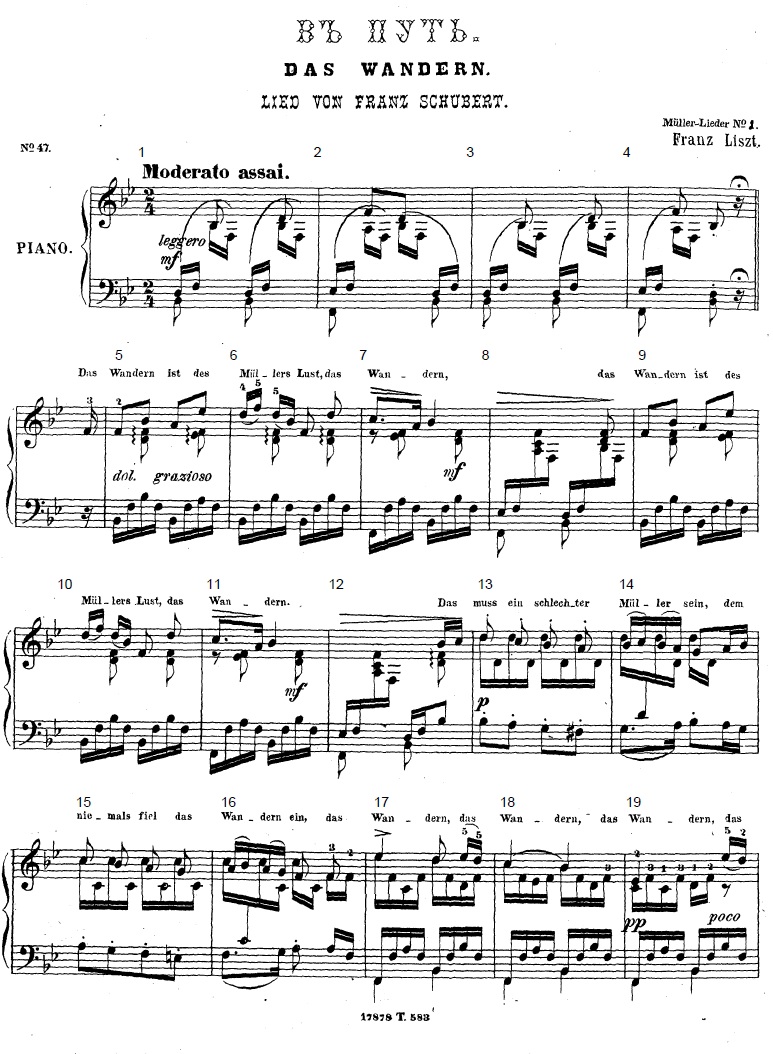I took a bit more liberty with the tempos in this version. The score is full of interesting tempo markings. The heading says “moderato assai, which means very moderate. How very? How moderate? Dunno. I choose to randomly pick a tempo each measure between 90 and 95 beats per minute shifting from one to the next using the Markov Chain Drunkard’s Walk. I’m sure the maestro would approve, although he may have favored a different randomization scheme.
In measure 5 he calls for “dol. grasioso”, which means sweetly graceful. Is that faster or slower? Dunno. Measure 19 says “poco rit. con grazia”. So here I slow down to 60-65 BPM. It’s different every time I run it through the randomizer.
At measure 45 we have several requests, “elegamente” and “cantando la melodia”, which means the top part is to be played elegantly while the bottom part has the melody. I slow it down to 80-85 BPM here.
Then at 64 we have “smorz.” (tone down) and “dolce armonioso” (harmonious and sweet). So I speed it up to the original 90-95 BPM. At measure 69 we are told “piu” (more). How much more? This is clarified at measure 71, where Lizst exhorts the player to “perdendosi” which means “dying away”. So I get real quiet here, but keep up the tempo.
Stream online:
or download here:
Das Wandern #2



